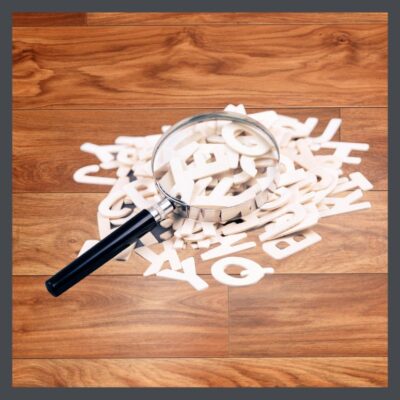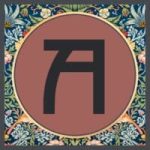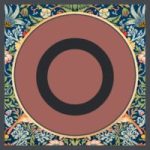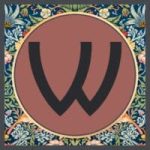 Use this bungalow wood floors restoration glossary when you’re ready to have the wood floors of your bungalow refinished or when you need some installed. After having dealt with myriad contractors, you have learned a great deal about each trade & realize that the next time you restore a bungalow, it will be a dang sight easier!
Use this bungalow wood floors restoration glossary when you’re ready to have the wood floors of your bungalow refinished or when you need some installed. After having dealt with myriad contractors, you have learned a great deal about each trade & realize that the next time you restore a bungalow, it will be a dang sight easier!
My purpose is to educate you sufficiently so that you will know more about this particular phase going in, instead of after it’s done & you’re wondering why it’s not exactly like you wanted it to be. I can’t make you an expert, but I can impart enough information in this wood flooring glossary so that you will understand the process before it begins, giving you better control over the final product. It starts with knowing the terminology.
So, when you get your wood floor refinishing proposal, make a nice cuppa ginger tea (hot or cold) & really read it. You also might want to get my 7 Vital teps to Hiring a Contractor e-book that you can get for FREE by just signing up for my mailing list.
I’m also thinking reading my hubby’s article on refinishing would be good too.
Let’s make it easier this time! And if you run across words in the any that I have missed, let me know & I’ll add them to the bungalow wood floor restoration glossary. I spent 45 years of my life educating people about historic wood floors so I want to get it right!

Acclimation
Allowing wood to adjust to the humidity in your home before installing & then again before sanding. This is important because wood expands & contracts based on the amount of moisture in the air.
Ambering
A red/yellowish color change in a floor from certain finishes. Your existing floor has ambered over the years. When your floor gets sanded, it will be a much lighter color.

Baseboard
A molding designed to be attached to the wall to cover the edge of a floor.
Blind nailing
Nailing at a 45 degree angle into the tongue so that the nail is not seen on the top of the floor.
Borders
Simple or intricate designs which frame & customize a flooring installation.
Buckling
Extreme warping of a wood floor from moisture, where some of the boards are actually lifting up off of the subfloor.
Burl
A rounded woody swelling on a tree trunk. The grain of the wood milled from such a knot is patterned & unusual.

Chatter marks
Patterned markings left on a floor by improper handling of a drum sander.
Crowning
A convex or raised appearance of individual strips, with the center raised above the edges.
Cupping
A concave or dished appearance of individual strips, with the edges raised above the center. Cupping is always caused by a moisture imbalance and is often the sign of a water intrusion or wet crawl space issue.
Cure
There’s dry & there’s cured, which is when a finish has reached its fullest hardness potential. Different types of finishes dry & cure at different rates.

Dimensional stability
Wood is a natural product & reacts to changes in humidity and temperature-warping, expanding, shrinking. Different species of wood react & change in differing degrees.
Domestic woods
These woods are harvested from trees that are native to & grown in the United States.
Drum sander (AKA big machine)
A type of sander used to smooth the floor, using replaceable abrasive sandpaper sheets to the surface of wood flooring to prepare it for finishing & sometimes staining.
Dustless sanding
Today’s technology features machines that have an integrated dust collection system. Most companies promote 99% efficiency. Many of our former customers reported 100% satisfaction.

Edger
A powerful, large, orbital hand (It spins around & around, flat against a surface) sander that allows you to sand the edges of floors, right up to baseboards and walls.
Engineered flooring
A wood flooring product that is made of layers of wood pressed together, with the grains running in different directions. Do not
Exotic woods
Woods that are from trees native to, & grown in countries other than the U.S.
Expansion
Wood is a product of nature & is affected by changes in the environment. It expands when it is exposed to water or humidity.
Expansion spacing
A space is left at the baseboard to allow for the floor to expand, which occurs with moisture. The space is covered by the base shoe molding.

Filler
Material which fills cracks or nail holes in a floor. It is tinted the color of the floor.
Finish
Protective coating applied to a wood floor.

Gloss level (Also known as sheen level)
The amount of light reflected by a particular finish. Your choices are satin or matte, semi gloss and high gloss.
Grade
The appearance of wood is judged (graded) by the number of visible knots & other natural markings.

Hardness
Refers to the strength of the hardwood species, based on a scale which measures the amount of force it takes to drive a .444 inch steel ball into a plank of wood .222 inches.
Hardplate
Use of equipment that will give you the flattest floor. It will remove high spots, such as chatter marks, without taking out soft grain.
Hardwood
A botanical group of trees that has broad leaves as opposed to needles. The wood of these trees is normally harder than needle bearing trees. Common hardwoods found in bungalow floors are oak, maple, mahogany.
Heart pine
Wood from the center of old-growth long leaf pine that is darker, denser & somewhat harder that newly harvested wood. Heart pine is much valued amongst bungalow owners.
Heartwood
Slightly harder & darker, non-living wood at the center of a tree at its center.

Intercoat abrasion
You want to ensure that the finish will be well-bonded to the floor’s surface. In order to achieve this bond, each coat applied must be lightly abraded after it is completely dry- so dry that the finish will form a powder when it is abraded.

Job finished
Floors that are sanded, stained & finished in your home.
Joists
Framing members, often a 2″ x 8″ pieces of lumber, which are usually spaced every 16″ to 24″ & support the sub-floor & flooring. Joists usually ‘sit’ on a sill beam (the structural beam that lays on top of your piers) or, toward the center of your house, right on the piers. In older homes, the flooring is often laid directly over these joists, with no subfloor.

Lacing in
The practice of replacing boards that are discolored or damaged, while leaving the remaining floor. The new boards are of the same wood (ideally reclaimed) & same width as the exiting boards.

Mill
To cut wood into a desired shape, e.g., strip or plank flooring, etc.
Moisture meter
A special device for testing moisture content in wood floors. Moisture issues should be detected & addressed before sanding your floors.
Moldings
Pieces of wood milled to install in a floor, giving it a finished look.

Nosing
A hardwood molding used to cover the outside corner of a step.
NWFA
An acronym for the National Wood Flooring Association which sets the standards for, & provides education & training for the industry.

Old-growth wood
Lumber that has been cut from trees that grew in America before the settlers came. Some of these trees were hundreds of years old when they were harvested. This is the wood we treasure in our old houses.

Parquet
A wood tile composed of individual slats assembled together, forming a pattern.
Penetrating oil sealers
These oil-based sealers are spread across the floor, allowing them to penetrate the surface, offering a stain and a finish to protect it. Excess is removed with a sponge or cloth. They offer differing levels of protection.
Photo sensitivity
Refers to the likelihood a wood floor’s color will change as it is exposed to light. The existing floors in your bungalow have spent 100 years doing this!
Plank
Wood flooring boards 3” & wider designed to be installed in parallel rows. In random width plank, the boards vary in width from 3” to 8”.
In very old floors, these planks can be just boards, nailed side-by-side. Newer floors have a tongue pattern cut into 1 side & a groove on the other side.
Plain sawn
The usual way of cutting a log. It gives a random mix of grain patterns.
Polyurethane
Type of finish for hardwood that does not require waxing.
Prefinished
Factory-finished flooring that requires only installation.\n\n[/cs_content_seo][cs_element_text _id=”43″ ][cs_content_seo]Quarter Round
A type of trim used between vertical walls and the floor.

Quartersawn
Wood which has a grain that runs parallel to the length of the board. (It is sometimes called “vertical grain”.) In oak the boards have ray-like markings running diagonally across them.

Sapwood
Wood near the outside of a tree. It is usually lighter in color than heartwood.
Screen and Coat
(Also referred to as “Recoat”.) A light scuff sanding of the existing urethane finish, followed by application of a coat (or coats) of urethane.
Sealer
Any finishing material that seals the wood.
Shellac
A resin substance secreted by female lac bugs. Used to form a cocoon, the resin comes from India and Thailand. Processed as dry flakes, it can be added to denatured alcohol to create a liquid. This liquid is then used as a food glaze or floor finish. It’s a natural option which is highly resistant to stain and odor. It provides a high gloss finish.
Solid flooring
Made from boards which are single pieces of wood from top to bottom.
Splintering
Can occur at the side of the boards when a floor is at the end of its useful life, or otherwise damaged.
Staining
The act of changing the color of wood without disturbing the texture or markings, through the application of transparent, pigmented liquids.
Strip flooring
Solid or engineered boards, “1 & 1/2” – “2 & ¼” wide, installed in parallel rows.
Subfloor
A foundation for a floor in a building. It can be concrete, plywood, or in older homes, pine planking.

Tongue & groove
In strip, plank and parquet flooring, a tongue is cut on one edge & a groove cut on the opposite edge. As the flooring is installed, the tongue of each strip or unit is interlocked with the groove of the adjacent strip or unit.
Top nailing (face nailing)
The old plank floors were nailed from the top of the planks while tongue & groove floors are nailed into the grooves so that the nails are hidden.
Trim
The finish moldings, such as baseboards or base shoe.

Urethane
Most common finish for wood flooring, available in various gloss levels

Vapor retarder
A material, such as foil, plastic film or specially coated paper, with a high resistance to vapor movement, used to control condensation or prevent migration of moisture.

Wear layer
The sandable wood surface above the tongue and groove. On 3/4″ solid wood floors, the wear layer is typically 6 millimeters (0.23622 inch). This is why you want to take good care of your floors!
Hopefully this bungalow wood floors restoration glossary helps you make sense of what you are seeing in your flooring proposal. If you still have questions, feel free to send them them to me & if I can’t answer them, I can pretty much guarantee that my brilliant husband can.
 STAY IN THE BUNGALOW KNOW!!!
STAY IN THE BUNGALOW KNOW!!!
Sign up for our newsletter & receive our FREE E-book, 7 VITAL Things to Do Before You Hire a Contractor.



This is adorable and helpful! I had to look up gradation.
Great! Is it a word in the last article?